Guocheng Zhou
Robust full-pose-parameter estimation for the LED array in Fourier ptychographic microscopy
Jun 11, 2022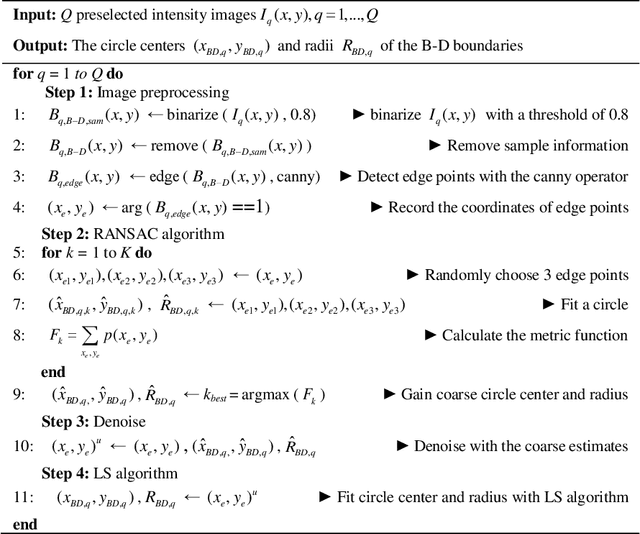
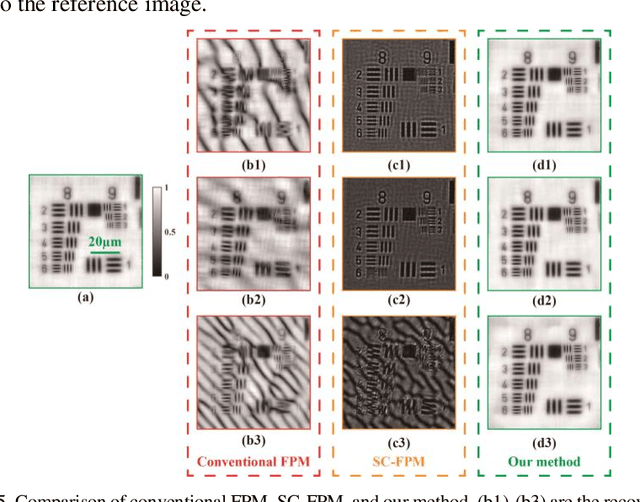
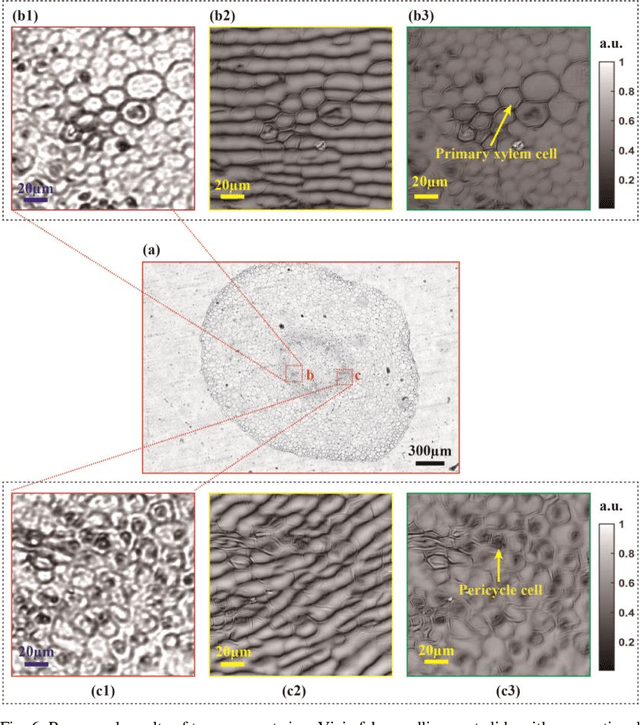
Abstract:Fourier ptychographic microscopy (FPM) can achieve quantitative phase imaging with a large space-bandwidth product by synthesizing a set of low-resolution intensity images captured under angularly varying illuminations. Determining accurate illumination angles is critical because the consistency between actual systematic parameters and those used in the recovery algorithm is essential for high-quality imaging. This paper presents a full-pose-parameter and physics-based method for calibrating illumination angles. Using a physics-based model constructed with general knowledge of the employed microscope and the brightfield-to-darkfield boundaries inside captured images, we can solve for the full-pose parameters of misplaced LED array, which consist of the distance between the sample and the LED array, two orthogonal lateral shifts, one in-plane rotation angle, and two tilt angles, to correct illumination angles precisely. The feasibility and effectiveness of the proposed method for recovering random or remarkable pose parameters have been demonstrated by both qualitative and quantitative experiments. Due to the completeness of the pose parameters, the clarity of the physical model, and the high robustness for arbitrary misalignments, our method can significantly facilitate the design, implementation, and application of concise and robust FPM platforms.
Parallel Fourier Ptychography reconstruction
Mar 04, 2022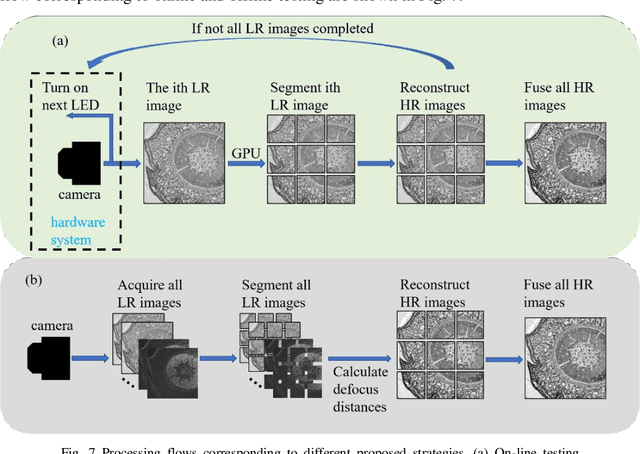
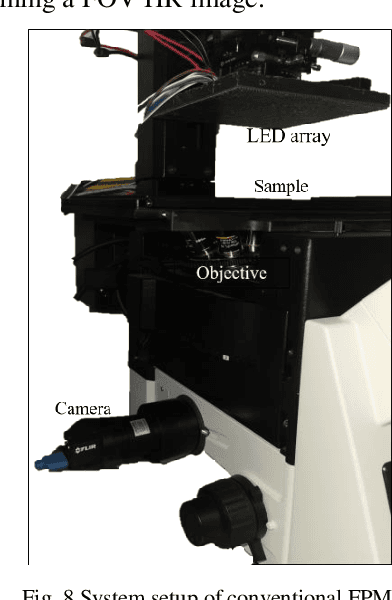
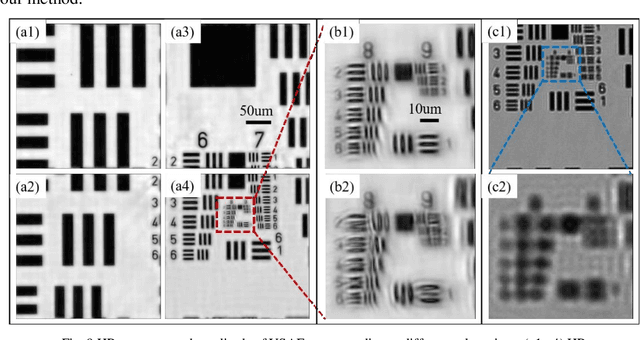
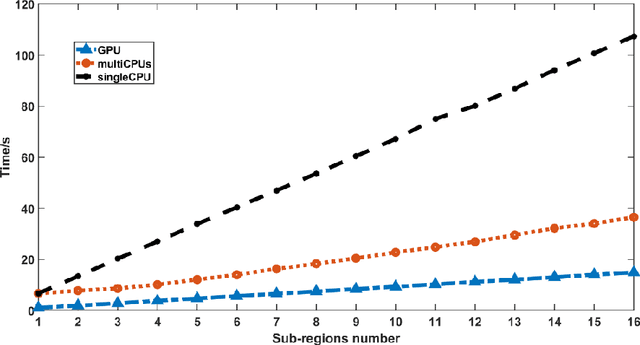
Abstract:Fourier ptychography has attracted a wide range of focus for its ability of large space-bandwidth-produce, and quantative phase measurement. It is a typical computational imaging technique which refers to optimizing both the imaging hardware and reconstruction algorithms simultaneously. The data redundancy and inverse problem algorithms are the sources of FPM's excellent performance. But at the same time, this large amount of data processing and complex algorithms also greatly reduce the imaging speed. In this article, we propose a parallel Fourier ptychography reconstruction framework consisting of three levels of parallel computing parts and implemented it with both central processing unit (CPU) and compute unified device architecture (CUDA) platform. In the conventional FPM reconstruction framework, the sample image is divided into multiple sub-regions for separately processing because the illumination angles for different subregions are varied for the same LED and different subregions contain different defocus distances due to the non-planar distribution or non-ideal posture of biological sample. We first build a parallel computing sub-framework in spatial domain based on the above-mentioned characteristics. And then, by utilizing the sequential characteristics of different spectrum regions to update, a parallel computing sub-framework in the spectrum domain is carried out in our scheme. The feasibility of the proposed parallel FPM reconstruction framework is verified with different experimental results acquired with the system we built.
Fourier ptychography multi-parameter neural network with composite physical priori optimization
Feb 18, 2022



Abstract:Fourier ptychography microscopy(FP) is a recently developed computational imaging approach for microscopic super-resolution imaging. By turning on each light-emitting-diode (LED) located on different position on the LED array sequentially and acquiring the corresponding images that contain different spatial frequency components, high spatial resolution and quantitative phase imaging can be achieved in the case of large field-of-view. Nevertheless, FPM has high requirements for the system construction and data acquisition processes, such as precise LEDs position, accurate focusing and appropriate exposure time, which brings many limitations to its practical applications. In this paper, inspired by artificial neural network, we propose a Fourier ptychography multi-parameter neural network (FPMN) with composite physical prior optimization. A hybrid parameter determination strategy combining physical imaging model and data-driven network training is proposed to recover the multi layers of the network corresponding to different physical parameters, including sample complex function, system pupil function, defocus distance, LED array position deviation and illumination intensity fluctuation, etc. Among these parameters, LED array position deviation is recovered based on the features of brightfield to darkfield transition low-resolution images while the others are recovered in the process of training of the neural network. The feasibility and effectiveness of FPMN are verified through simulations and actual experiments. Therefore FPMN can evidently reduce the requirement for practical applications of FPM.
 Add to Chrome
Add to Chrome Add to Firefox
Add to Firefox Add to Edge
Add to Edge